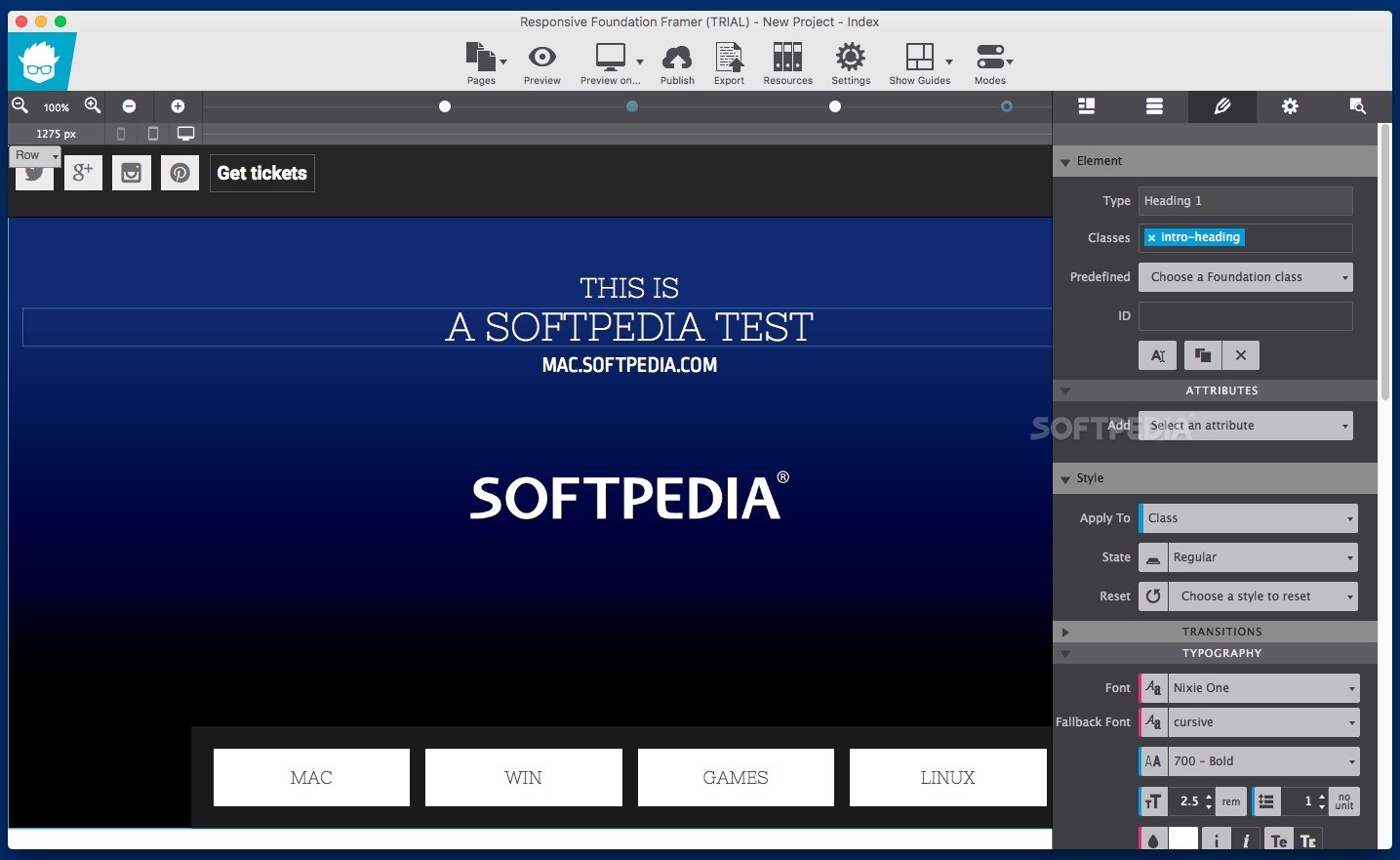

These data-attributes and their values can be accessed by JavaScripts to create richer, more engaging user experiences. With HTML 5 came the possibility to assign custom data to (HTML) elements. The order of applied settings can be changed by moving the background property boxes up or down. The use of these controls is straightforward, simply Add an Image or Gradient and set the desired CSS property values. With a bit of practice this can be used to create cool effects, such as overlays on images as can be seen in the A Festival Event theme. For now, let’s look at two more places where Foundation Framer has additional power compared to Responsive Site Designer.ĬSS3 allows web designers to specify multiple backgrounds, images and gradient, on a single element. In case a variation of a symbol is needed, a specific page could have a slightly different footer for example, the symbol can be unlinked and will not be affected by updates to other instances.īoth components and symbols make creating and maintaining websites a whole lot smoother and we have big plans for further developments here, so stay tuned. Using the arrow keys you can navigate to each instance of the symbol. The symbol control includes a preview function and shows how many instances of the symbol are currently used in the project. The footer or menu symbol will than be updated everywhere it has been placed. Using the symbol functionality a link edit, text tweak, or even a content restructuring only needs to be done in one place. Website modules (components) such as footers and navigation menus are frequently the same across all pages.
#RESPONSIVE FOUNDATION FRAMER UPDATE#
A change to a symbol item will globally update all instances of the symbol, whether located on the same page or any other pages of the project. Symbols represent linked elements of groups of elements. Toggle classes or visibility of elements by simply adding a data-attribute and / or value on the design pane, and the sky’s the limit! Using the ‘Toggler’ included in the Foundation 6, all types of custom interactive components can be created as well. The included themes come with theme specific variations and customizations of these components, such as a ‘tab-image-gallery’. These handy components speed up the design or prototyping process and are easy to customize. Componentsįoundation Framer comes with a bunch of pre-built components - website building blocks such as responsive navigation menus, modal dialogs, tab systems and more. It also has JavaScript plugins so you can add interactive components for navigation, slideshows, toggles, and much more without the hassle of external libraries. This app is beloved because it is powered-up with custom breakpoints, pre-built components, and symbols for global content updates. However, Foundation Framer boasts some pretty big differences as it is based upon Foundation 6, one of the most popular open source front end frameworks, created by the talented people of Zurb. The code-free interfaces of Responsive Site Designer and Foundation Framer share many similarities. Each breakpoint has its own settings like min/max screen size, number of columns, gutter, etc.Foundation Framer and Responsive Site Designer To define them just select it from the frameworks list (Bootstrap, Foundation, Bulma, etc.) or create your own grid system from scratch. In this example, I want to use Bootstrap grids and cover 2 breakpoints (XL ≥1200, XS<576)

Features A bit smarter layout gridsįirst thing first, let’s set up a grid system for our project.

Figma does offer the potential chances to implement those things quite easily, so here is how I envision the better way for working with breakpoints without making huge efforts or doing any geek math instead of designing itself. I believe that on the development side this is something that already works quite good, so why we can’t optimize the design process in a similar way?ĭoing this type of routine every day, I figured out some key points that in fact may be done smarter than manually. But there is no chance to skip that part because nowadays we have around 60% of mobile users, so a good mobile version is a must-have thing. The only problem with it that in most cases you are just moving pixels and resizing things from one breakpoint to another, and it takes so much time. Despite being a headache for product designers since the early beginning of the profession, proper design for different breakpoints is a quality mark of a well-crafted unified design that really works, not just looks good.


 0 kommentar(er)
0 kommentar(er)
